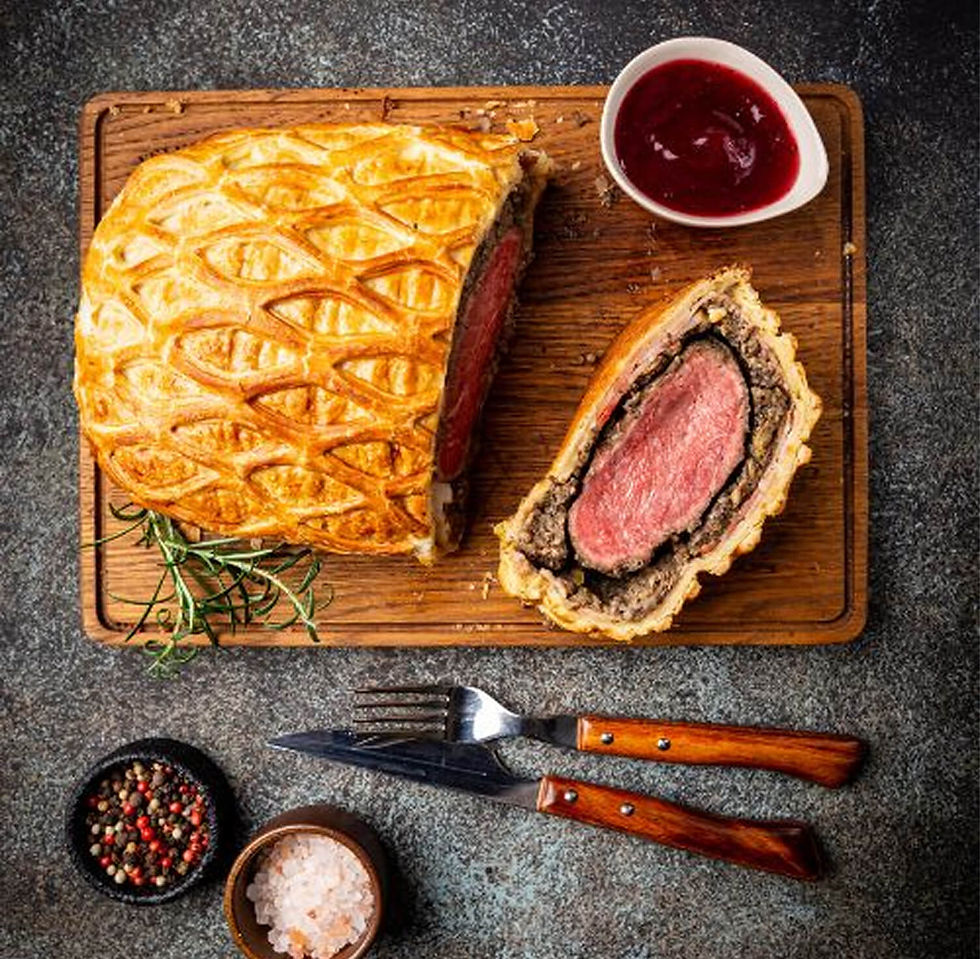The Rise of Large Vision-Language Models (LVLMs): Bridging the Gap Between Seeing and Understanding
- Techno Billion AI
- Mar 25
- 3 min read
Updated: Apr 3
AI systems like ChatGPT and DALL-E have amazed people by creating text and art. But what if machines could not only see images but also understand them like humans do? That’s where Large Vision-Language Models (LVLMs) come in. These powerful AI models can process both images and text, opening up new possibilities in areas like healthcare and self-driving cars. In this blog, we’ll break down how LVLMs work, where they’re being used, the challenges they face, and what the future holds for them.
What Are LVLMs?
LVLMs (Large Vision-Language Models) are smart AI systems that can understand and generate both images and text. Unlike older models that only handle one type of data at a time, LVLMs combine both to do things like:
Describing pictures in words.
Answering questions about images (e.g., “What’s happening in this photo?”).
Creating images from text descriptions (or turning images into text).
Think of LVLMs as AI with both “eyes” and “words.” They can look at a sunset and write a poetic caption or examine a medical scan and explain the results in simple terms.
The Evolution of LVLMs
LVLMs didn’t appear overnight—they evolved from earlier AI systems that worked separately:
Early Vision Models: AI like CNNs (e.g., ResNet) that recognized and classified images.
Language Models: Transformers like BERT and GPT that processed and generated text.
Multimodal Pioneers: Models like CLIP (OpenAI) and ViLBERT (Facebook) that linked images and text.
Today’s LVLMs, such as GPT-4V (OpenAI) and Flamingo (DeepMind), combine these advances. They use huge datasets and unified designs, allowing AI to understand both visuals and language together more smoothly than ever before.
How Do LVLMs Work?
LVLMs process and generate both images and text using a combination of deep learning techniques. Here’s a simplified breakdown of how they work:

How LVLMs Achieve Pixel-Precise Localization:
LVLMs use advanced AI techniques to accurately locate objects within images based on text prompts. Here’s a refined step-by-step breakdown:

Step-1. Input Processing
User Prompt: The user provides a text prompt (e.g., "Find the red apple") along with an image.
Vision Encoder: Extracts visual features from the image.
Language Encoder: Understands the meaning of the text prompt.
Step-2. Attention Mapping
The model aligns the text with relevant regions in the image using an attention mechanism.
This helps the AI focus on the specific areas related to the prompt.
Step-3. Code Generation for Object Localization
The model generates executable code to process the task.
This code includes steps for locating the object within the image.
Step-4. Converting Descriptions into Pixel Coordinates
Tools like OpenCV, NumPy, and scikit-learn transform attention maps into precise pixel coordinates.
These coordinates are used to create bounding boxes around the object.
Step-5. Integration and Refinement
The model refines object localization by combining both visual and textual data.
This ensures the identified object accurately matches the prompt.
Step-6. Execution
The generated code is executed in an AI environment.
The model processes the image and applies the bounding box.
Step-7. Object Detection and Display
The object is localized with bounding boxes and displayed precisely within the image.
Leading LVLMs:
Model Name | Developer(s) | Release Year | Description |
GPT-4o | OpenAI | 2024 | An evolution of GPT-4, GPT-4o is a multimodal model capable of processing and generating text, images, and audio. It achieved state-of-the-art results in various benchmarks, including voice, multilingual, and vision tasks. |
Sora | OpenAI | 2024 | Aimed at text-to-video generation, Sora leverages advanced vision-language integration to create coherent video content from textual descriptions, pushing the boundaries of AI-generated media. |
Phi-4 Multimodal | Microsoft | 2024 | A multimodal language model excelling in understanding and generating content that combines both visual and textual elements. |
Gemma 3 | 2025 | An advanced model focusing on integrating vision and language for comprehensive multimodal understanding and generation. | |
DeepSeek-VL2 | DeepSeek | 2024 | A Mixture-of-Experts Vision-Language Model designed for advanced multimodal understanding, capable of processing high-resolution images with dynamic tiling and efficient inference. |
NVLM 1.0 | NVIDIA | 2024 | A family of multimodal large language models achieving state-of-the-art results on vision-language tasks, integrating novel architectures and training strategies. |
Llama 3.2 | Meta | 2024 | Meta's first open-source AI model capable of processing both images and text, designed to aid developers in creating advanced AI applications. |
Nova | Amazon | 2024 | A set of AI models designed for text, image, and video generation, offering developers improved latency, lower costs, and fine-tuning capabilities. |
Key Applications of LVLMs:

LVLMs are changing how AI sees and understands the world, impacting industries like healthcare and creativity. While they offer exciting possibilities, challenges like bias and ethical concerns remain. As these models improve, they will likely become everyday tools, seamlessly blending human and machine intelligence. The future of AI is multimodal, and LVLMs are leading the way.
How do you think Vision-Language Models (LVLMs) will impact the future of AI?
They will be useful but have limited applications.
They might face challenges in accuracy and bias.
They are overhyped and won’t significantly change AI.
They will revolutionize AI.
1
Searing the Beef
Sear beef fillets on high heat for 2 minutes per side to form a golden crust. Let it cool before proceeding to keep the beef tender.
1
Searing the Beef
Sear beef fillets on high heat for 2 minutes per side to form a golden crust. Let it cool before proceeding to keep the beef tender.
1
Searing the Beef
Sear beef fillets on high heat for 2 minutes per side to form a golden crust. Let it cool before proceeding to keep the beef tender.
1
Searing the Beef
Sear beef fillets on high heat for 2 minutes per side to form a golden crust. Let it cool before proceeding to keep the beef tender.
Notes



1
Season the good fresh beef fillets with salt and black pepper. Heat olive oil in a pan over high heat and sear the fillets for 2 minutes per side until it fully browned. Remove the beef from the pan and brush with a thin layer of mustard. Let it cool.



1
Season the good fresh beef fillets with salt and black pepper. Heat olive oil in a pan over high heat and sear the fillets for 2 minutes per side until it fully browned. Remove the beef from the pan and brush with a thin layer of mustard. Let it cool.



1
Season the good fresh beef fillets with salt and black pepper. Heat olive oil in a pan over high heat and sear the fillets for 2 minutes per side until it fully browned. Remove the beef from the pan and brush with a thin layer of mustard. Let it cool.



1
Season the good fresh beef fillets with salt and black pepper. Heat olive oil in a pan over high heat and sear the fillets for 2 minutes per side until it fully browned. Remove the beef from the pan and brush with a thin layer of mustard. Let it cool.
Instructions
Quality Fresh 2 beef fillets ( approximately 14 ounces each )
Quality Fresh 2 beef fillets ( approximately 14 ounces each )
Quality Fresh 2 beef fillets ( approximately 14 ounces each )
Beef Wellington

Beef Wellington
Fusion Wizard - Rooftop Eatery in Tokyo
Author Name

Beef Wellington is a luxurious dish featuring tender beef fillet coated with a flavorful mushroom duxelles and wrapped in a golden, flaky puff pastry. Perfect for special occasions, this recipe combines rich flavors and impressive presentation, making it the ultimate centerpiece for any celebration.
Servings :
4 Servings
Calories:
813 calories / Serve
Prep Time
30 mins
Prep Time
30 mins
Prep Time
30 mins
Prep Time
30 mins





Comments